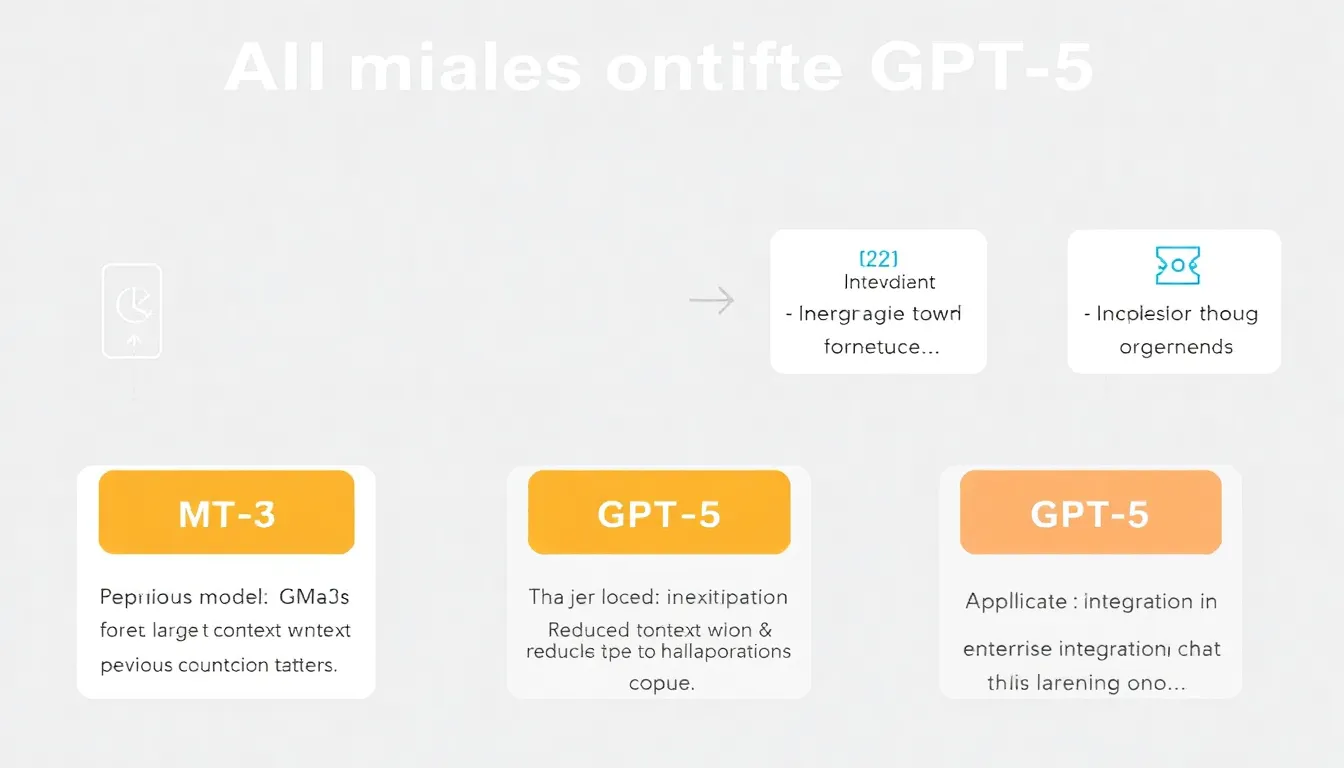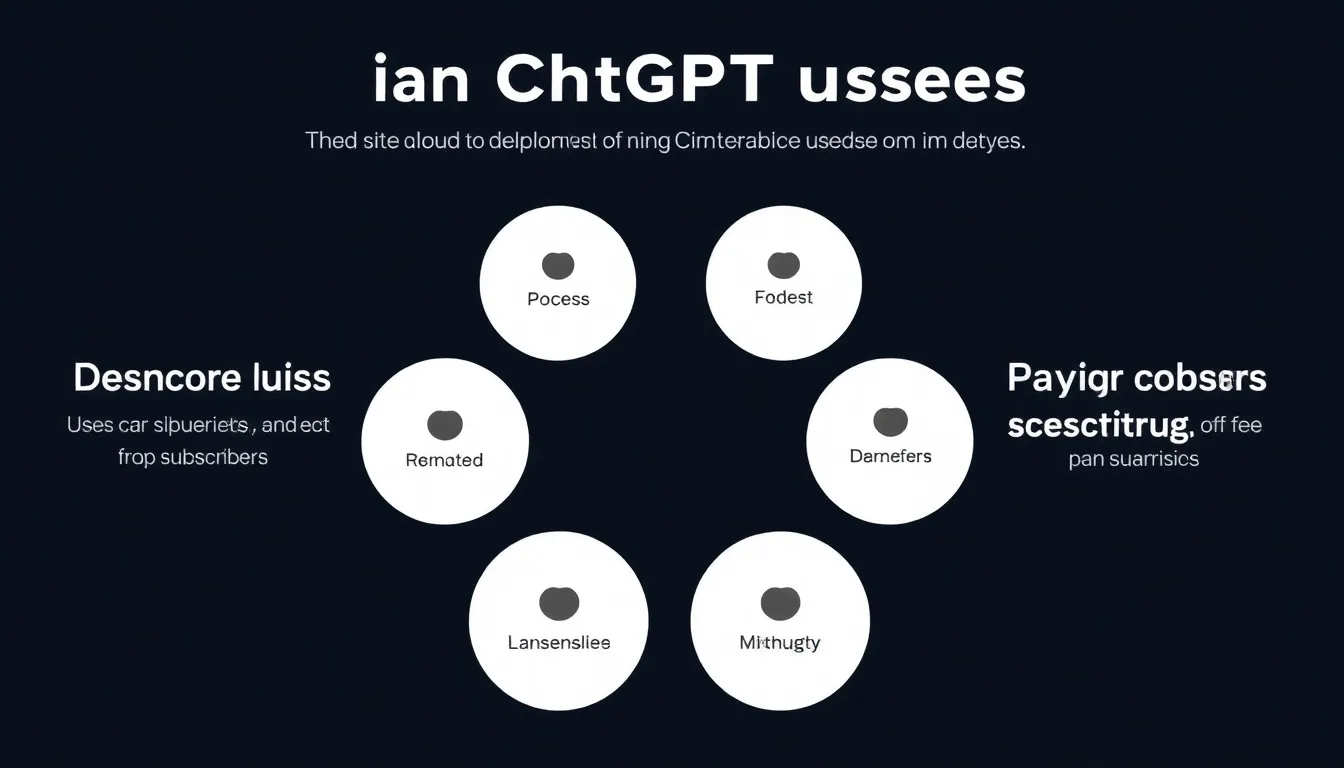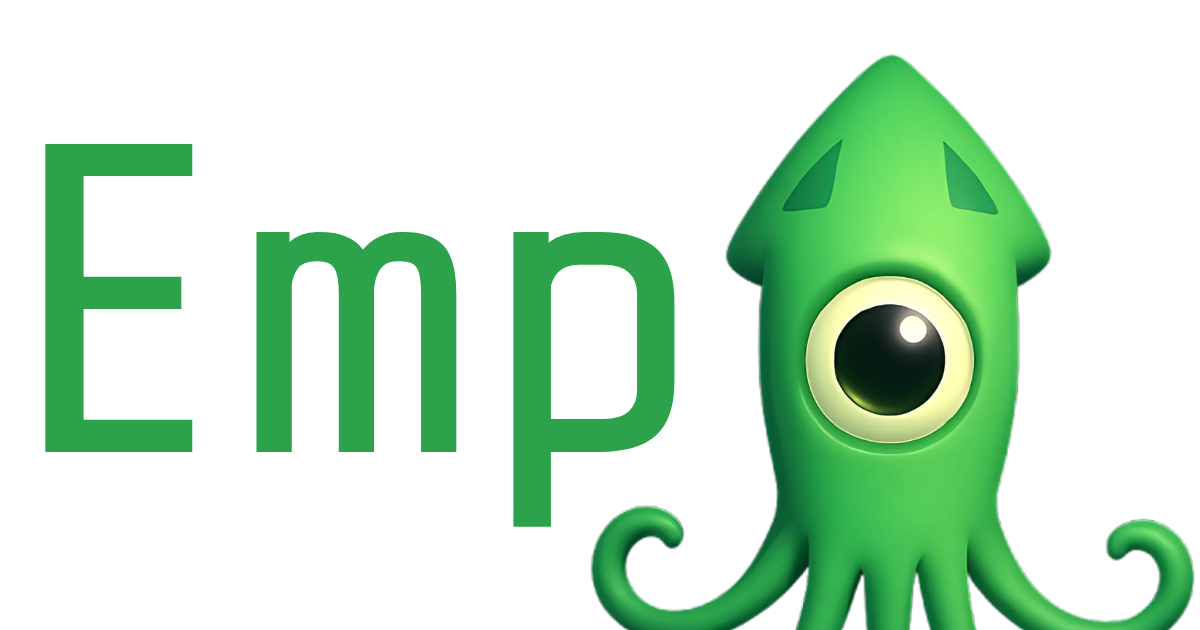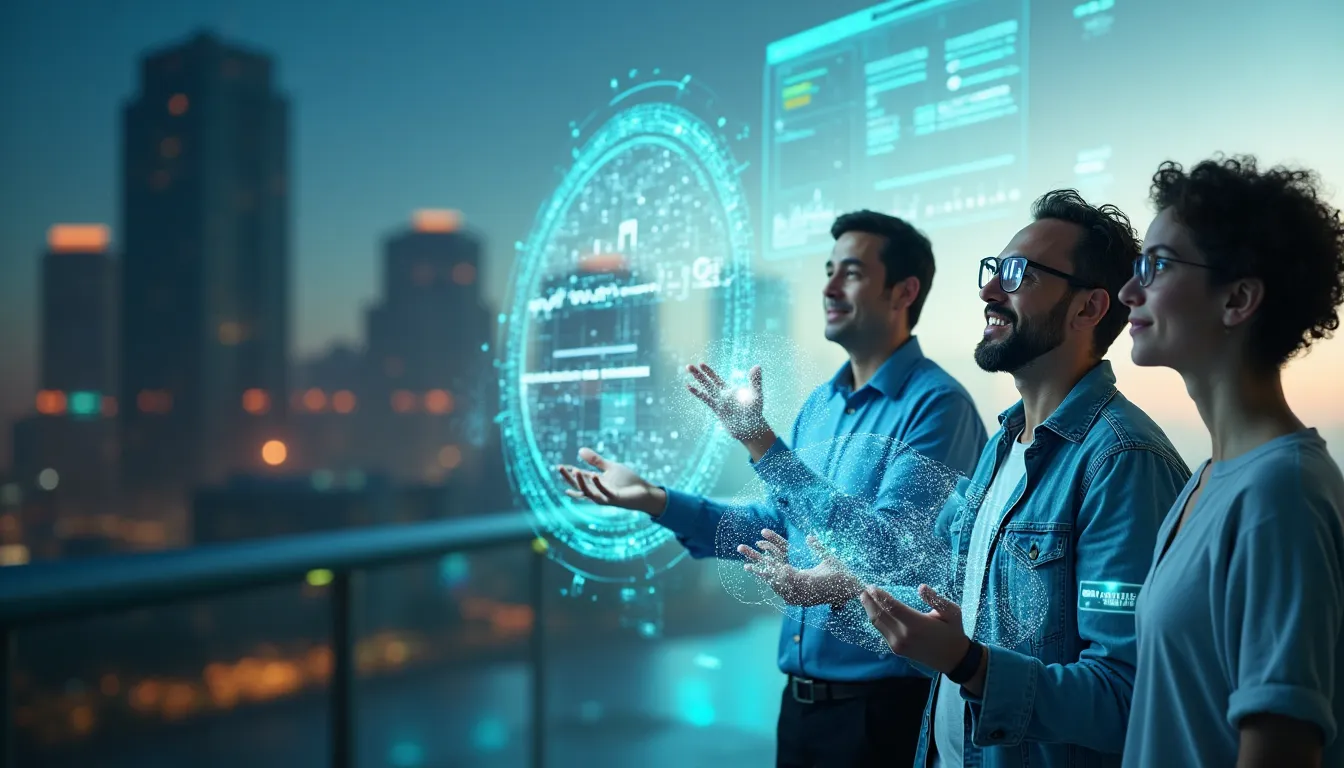The excitement surrounding the launch of GPT-5 is palpable, as OpenAI officially unveiled this groundbreaking AI model on August 7, 2025. With significant advancements that elevate its functionality and usability, GPT-5 is set to reshape how we interact with technology.
Building on prior iterations like GPT-4 with its impressive 200,000-token context window, GPT-5 boasts a staggering 256,000-token capacity, ensuring even richer dialogues and more comprehensive interpretations. OpenAI’s commitment to reducing hallucinations has also borne fruit, with announced improvements showcasing a remarkable 65% reduction compared to previous models.
This evolution highlights OpenAI’s overarching goals of achieving the vision of artificial general intelligence (AGI) while enhancing practical applications for developers and enterprises alike. As the AI landscape evolves, GPT-5 stands out as a beacon of innovation, promising a new era of AI-human collaboration that is smarter, faster, and more intuitive than ever before.

OpenAI’s GPT-5 Launch
OpenAI’s latest model, GPT-5, launched on August 7, 2025, marks a monumental leap in AI capabilities. This new model integrates several groundbreaking features that significantly enhance the user experience and application potential.
-
Expanded Context Window:
GPT-5 comes with a staggering 256,000-token context window, allowing for richer, more coherent dialogues than ever before. This feature enables users to engage in more detailed discussions without losing context, making it ideal for applications requiring extensive contextual understanding. -
Significant Reduction in Hallucinations:
In an stride to enhance reliability, GPT-5 boasts a remarkable 65% reduction in hallucinations from previous versions. OpenAI claims that in scenarios where facts are critical, such as the medical field, hallucinations have dropped dramatically from 12.9% in GPT-4 to just 1.6% with GPT-5’s upgraded performance. Sam Altman emphasized this advancement, stating that GPT-5 represents “a significant step along the path to AGI,” and noted it feels like talking to “a PhD level expert” across various topics. -
Enhanced Performance and Collaboration Features:
This model is designed not just for theoretical tasks, but as a robust coding collaborator and excels at complex workflows, as noted by product lead Michelle Pokrass. She described GPT-5 as “a great coding collaborator” that handles various agentic tasks efficiently.
These features reflect OpenAI’s continuous commitment to advancing AI technology while maintaining user trust and interaction quality. GPT-5 not only positions itself as a smarter model but also sets a new standard in the AI industry’s approach to contextual dialogue and factual accuracy.
For further insights, explore these articles:
OpenAI’s GPT-5 Launch – Wired and
GPT-5 – MarkTechPost.
| Model | Unique Features | Token Limits | Ideal Use Cases |
|---|---|---|---|
| GPT-5-mini | Compact version, optimized for lightweight tasks | 60,000 tokens | Quick interactions, simple queries |
| GPT-5-nano | Even smaller footprint, enhanced for voice and chat | 30,000 tokens | Chat applications, mobile integrations |
| GPT-5-pro | Full capabilities with advanced understanding | 256,000 tokens | Complex dialogues, professional applications |
| GPT-5-thinking | Specialized for reasoning tasks and minimal hallucinations | 256,000 tokens | Critical reasoning tasks, decision support systems |
As of August 2025, ChatGPT has garnered significant user engagement, boasting approximately 700 million weekly active users. This figure represents a remarkable fourfold increase compared to the previous year, underscoring the model’s extensive adoption across various sectors, including personal, business, and government applications. Daily engagement is also robust, with around 122 million daily active users, demonstrating the platform’s sustained relevance and utility in everyday tasks.
Among these users, there are 5 million paying business users, indicating a strong inclination toward enterprise-level adoption. Notably, 92% of Fortune 500 companies are reported to have integrated ChatGPT into their operations, reflecting the increasing reliance on AI tools in professional settings. Additionally, over 12 million users subscribe to premium plans like ChatGPT Plus, highlighting a thriving ecosystem around ChatGPT offerings.
The launch of GPT-5 is anticipated to further boost these statistics, as its advanced features, such as enhanced reasoning capabilities and reduced hallucinations, make it more appealing to both consumers and enterprises. With improvements in performance, GPT-5 aims to attract a broader user base, potentially increasing the number of paying business users as companies leverage its enhanced functionalities for complex tasks and workflows.
In summary, the impressive growth in user statistics for ChatGPT, marked by nearly 700 million weekly users and 5 million paying business customers, signals a transformative shift towards embracing AI technologies in various facets of life and work.

Enterprise Features of GPT-5
The integration of GPT-5 into enterprise platforms like Google Workspace and Microsoft SharePoint is significantly transforming business workflows and collaboration.
GPT-5 Enterprise Features:
GPT-5 offers advanced reasoning capabilities, improved context retention, and enhanced accuracy in complex tasks. These features enable businesses to automate intricate processes, generate high-quality content, and facilitate more effective decision-making. For instance, Microsoft has integrated GPT-5 across its ecosystem, including Microsoft 365 Copilot, enhancing productivity tools with superior AI assistance. Tekedia
API Integration with Google Workspace and Microsoft SharePoint:
Integrating GPT-5 with platforms like Google Workspace and Microsoft SharePoint allows for seamless AI-driven functionalities within familiar business environments. In SharePoint, for example, the introduction of AI-powered features such as the Editorial card and Amplify enhances content creation and distribution, enabling users to create engaging pages and manage cross-channel communications efficiently. Microsoft Community Hub
Impact on Workflows and Collaboration:
The incorporation of GPT-5 into these platforms streamlines workflows by automating routine tasks, facilitating data analysis, and providing intelligent insights. This leads to increased efficiency and allows employees to focus on strategic initiatives. Moreover, AI-driven tools enhance collaboration by offering real-time assistance, improving document management, and enabling more effective communication across teams. For example, businesses leveraging Microsoft 365 Copilot have reported significant productivity gains, with employees saving hours per week on administrative tasks. Microsoft
In summary, GPT-5’s integration into enterprise platforms like Google Workspace and Microsoft SharePoint is revolutionizing business operations by enhancing automation, improving collaboration, and driving overall productivity.
The release of GPT-5 has been met with a mixture of excitement and scrutiny from users and experts alike, showcasing significant advancements over previous iterations.
-
Unified Model Architecture
Experts highlight GPT-5’s unified model architecture, which automatically selects the best version for each task, enhancing usability and efficiency. This advancement allows for a smoother user experience compared to earlier models, which required users to navigate multiple versions. Sam Altman noted, “GPT-5 is the first time that it really feels like talking to an expert in any topic, like a PhD-level expert.”
-
Enhanced Coding Abilities
Developers have praised the model’s coding capabilities, reporting breakthroughs in areas like debugging and software design. Functionality such as “vibe coding” allows users to generate complex software with minimal input. Michelle Pokrass stated, “It’s a great coding collaborator and also excels at agentic tasks,” illustrating GPT-5’s effectiveness in real-world applications.
-
Reduced Hallucinations
One of the most critical improvements is the 65% reduction in hallucination rates compared to previous versions. Experts noted that this makes GPT-5 more reliable for tasks requiring factual precision. In applications such as healthcare, the model provides context-aware interactions that prioritize accuracy, reducing the risk of misinformation dramatically.
-
Varied Real-world Applications
Users have shared success stories in various fields. From generating coherent texts for SEO to providing personalized scheduling assistance through integrated tools like Google Workspace, GPT-5 caters to a diverse range of professional needs.
-
Concerns Over Performance
Despite positive feedback, some users expressed disappointment, suggesting that GPT-5 only achieves marginal improvements over GPT-4. Critics argue that changes in functionality and occasionally shorter responses challenge users’ expectations, leading to a perception that it might lack creativity in certain scenarios. Experiments by users drew comparisons to other models, noting areas of competitive strength and weakness.
Overall, feedback indicates that while GPT-5 marks a significant advancement in AI technology with improved contextual understanding and interaction capabilities, the blend of positive and critical perspectives highlights the ongoing evolution within AI user experiences.
To read more on how GPT-5 compares to its predecessors and hear community reactions, check out these articles:
OpenAI ChatGPT-5 Updates and
Analysis of GPT-5 Improvements.
The advent of GPT-5 heralds a pivotal moment in the evolution of artificial intelligence, promising transformative implications for various industries. With its enhanced cognitive capabilities and a reduction in inaccuracies, GPT-5 significantly increases productivity, fostering more seamless workflows in sectors such as healthcare, finance, and education. Its integration with enterprise platforms like Google Workspace and Microsoft SharePoint positions it as a game-changer in organizational efficiency, enabling companies to automate complex processes and deliver high-quality outputs.
As AI technology approaches the threshold of artificial general intelligence (AGI), GPT-5 serves as a crucial stepping stone. The model’s advanced reasoning proficiency allows for richer human-AI interactions, resembling consultations with domain experts, thus driving further adoption. However, with these advancements come ethical considerations, including the need for responsible AI usage and addressing potential biases embedded within algorithms.
Looking ahead, GPT-5’s capabilities could redefine collaboration dynamics, empowering individuals across various professions to leverage AI as a supportive partner rather than a mere tool. Ultimately, as GPT-5 sets new standards, it opens the door for future iterations, further progressing toward a world where intelligent machines complement human creativity and decision-making in unprecedented ways.
Are you ready to take your productivity to the next level? Explore the groundbreaking features of GPT-5 and unlock the full potential of artificial intelligence in your daily workflows. Whether you’re a developer seeking advanced coding collaboration or a business leader looking to streamline processes, GPT-5 has something to offer. Don’t miss out—subscribe today to stay updated on the latest advancements and integrate this powerful tool into your own operations. Experience the future of AI technology now!

